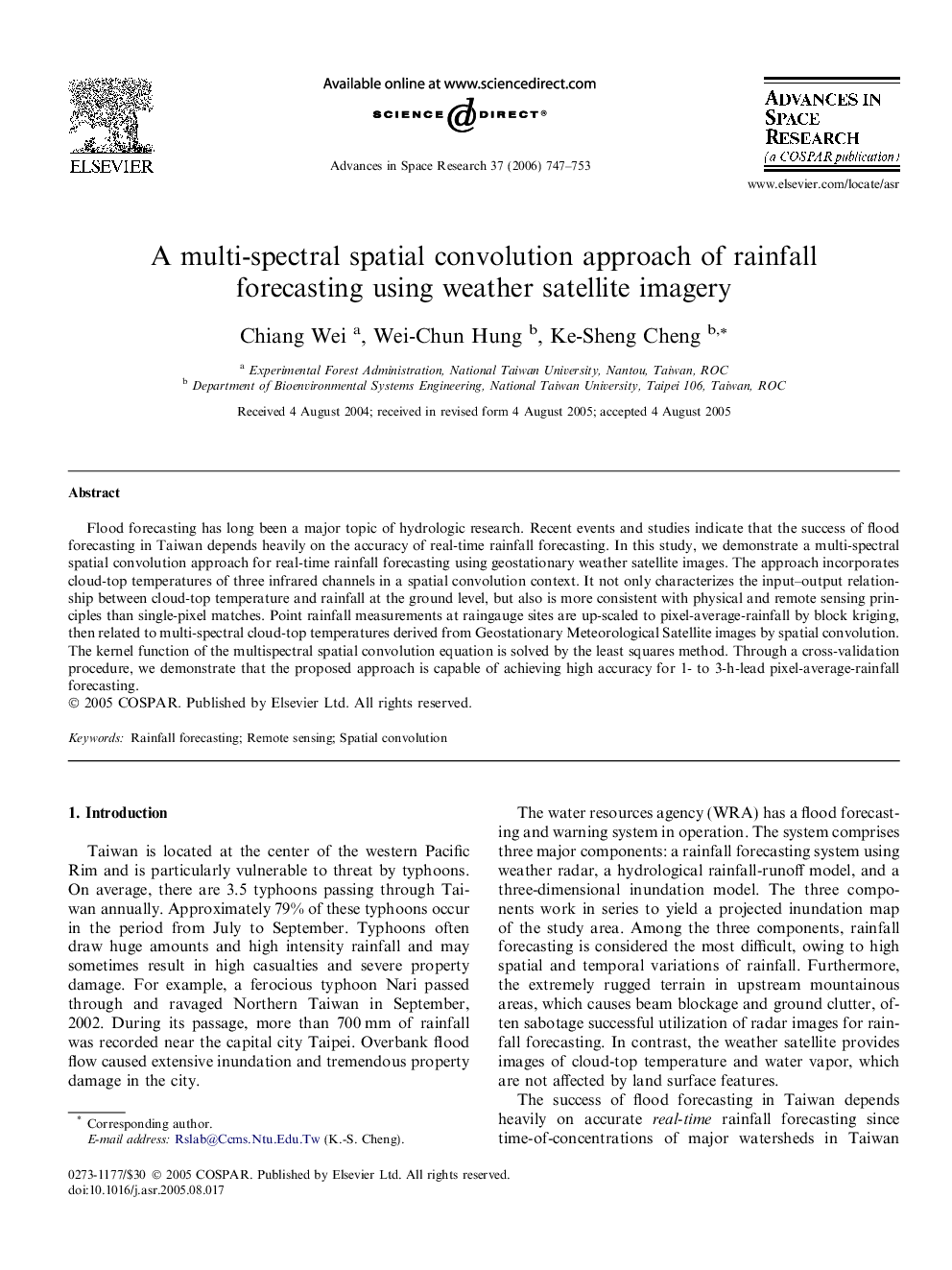| Article ID | Journal | Published Year | Pages | File Type |
|---|---|---|---|---|
| 1769512 | Advances in Space Research | 2006 | 7 Pages |
Flood forecasting has long been a major topic of hydrologic research. Recent events and studies indicate that the success of flood forecasting in Taiwan depends heavily on the accuracy of real-time rainfall forecasting. In this study, we demonstrate a multi-spectral spatial convolution approach for real-time rainfall forecasting using geostationary weather satellite images. The approach incorporates cloud-top temperatures of three infrared channels in a spatial convolution context. It not only characterizes the input–output relationship between cloud-top temperature and rainfall at the ground level, but also is more consistent with physical and remote sensing principles than single-pixel matches. Point rainfall measurements at raingauge sites are up-scaled to pixel-average-rainfall by block kriging, then related to multi-spectral cloud-top temperatures derived from Geostationary Meteorological Satellite images by spatial convolution. The kernel function of the multispectral spatial convolution equation is solved by the least squares method. Through a cross-validation procedure, we demonstrate that the proposed approach is capable of achieving high accuracy for 1- to 3-h-lead pixel-average-rainfall forecasting.
